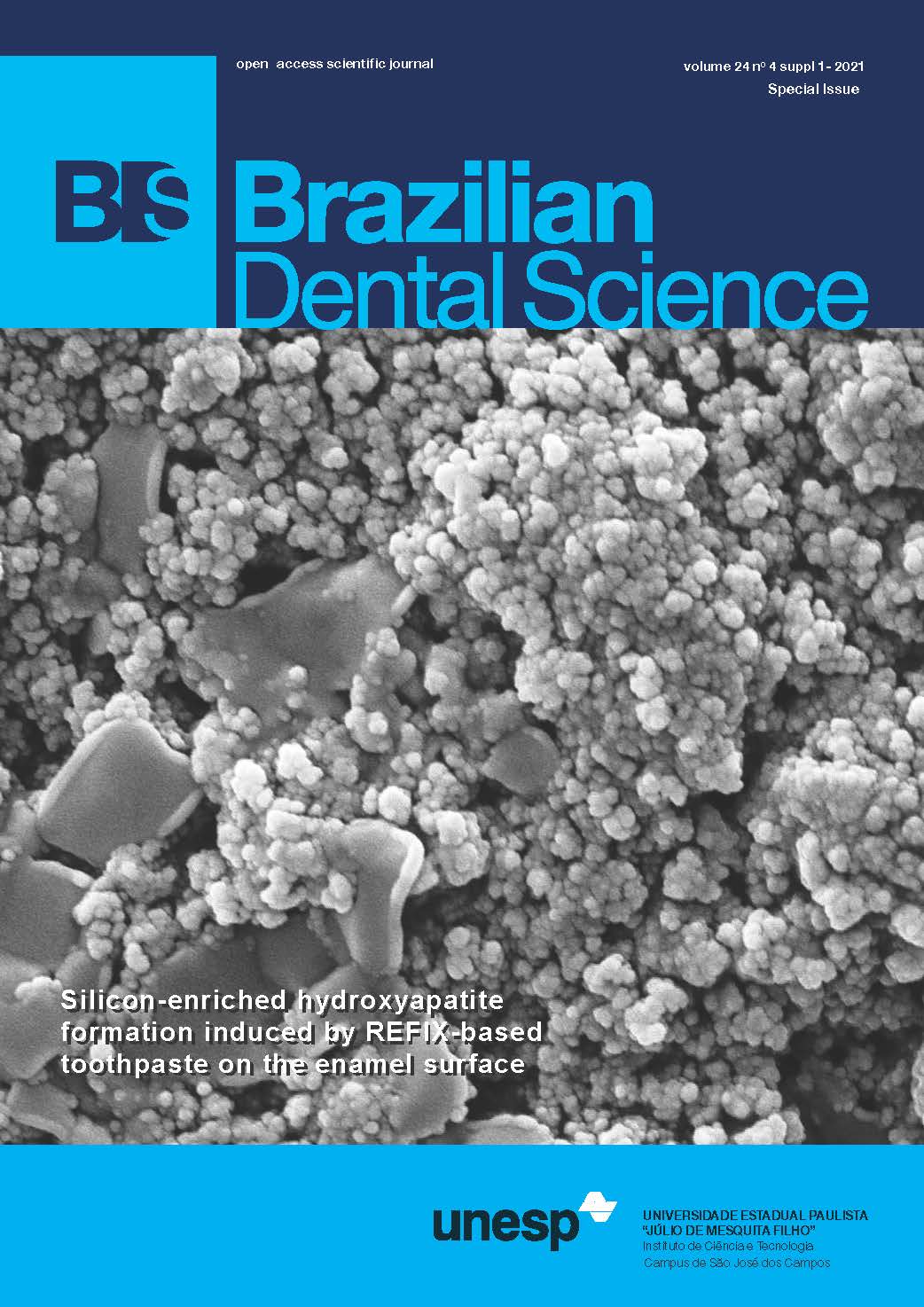Microshear bond strength of universal adhesives to enamel and dentin: an eighteen-month in vitro study
DOI:
https://doi.org/10.4322/bds.2021.e2791Abstract
Objective: The aim of this study was to evaluate the microshear bond strength of Universal adhesives to enamel and
dentin after one week and eighteen months of water storage. Material and Methods: Fragments from the buccal
surfaces of 80 bovine teeth were prepared (12x5x1.0 mm) and ground to obtain flat surfaces of enamel and dentin.
Samples were randomly assigned to 8 experimental groups (n=10), according to four adhesive systems (Adper Single
Bond Plus/control – not a Universal adhesive/ASB; Ambar Universal/AUN; Prime&Bond Active/PBA and Scotchbond
Universal/SBU) and two water-storage times (one week and eighteen months after sample preparations). Adhesives
were applied according to the manufacturers’ instructions and molds were positioned over bonded surfaces. A flowable
composite was poured into the molds to fill up their internal diameter and obtain resin cylinder (1.0mm height/0.7mm
internal diameter) after light-curing. Bond strength was determined using a testing machine (0.5 mm/min) and data
were statistically analyzed by two-way analysis of variance (ANOVA) and the post-hoc Tukey’s test (alpha=0.05).
Failure patterns were analyzed for all resin cylinder tested. Results: For enamel, differences among adhesives were
observed only at 18 months, in which SBU produced lower bond strength values (15.9±3.0 MPa) than the others
universal adhesives (AUN: 19.3±4.8 and PBA: 21.4±2.1 MPa) (p<0.05). For dentin, there were differences among
adhesives only at 7 days, with PBA showing the highest bond strength (37.4±4.9 MPa) and ASB the lowest one
(19.4±3.9 MPa) (p<0.05). Enamel and dentin bond strength of all adhesives decreased significantly after 18 months
and reduction percentage varied from 36.9 to 52.4 for enamel and from 35.1 to 62.8 for dentin. Adhesive and mixed
failures showed high incidences. Conclusion: Results suggested that adhesives presented differences among them
depending on type of hard dental tissue and evaluation time. Enamel and dentin bond strengths of control and all
universal adhesives tested were not stable, decreasing at eighteen months.
KEYWORDS
Hard Dental tissues; Bonding agents; Adhesion; Water storage.
Downloads
Downloads
Published
How to Cite
Issue
Section
License
Brazilian Dental Science uses the Creative Commons (CC-BY 4.0) license, thus preserving the integrity of articles in an open access environment. The journal allows the author to retain publishing rights without restrictions.
=================




























